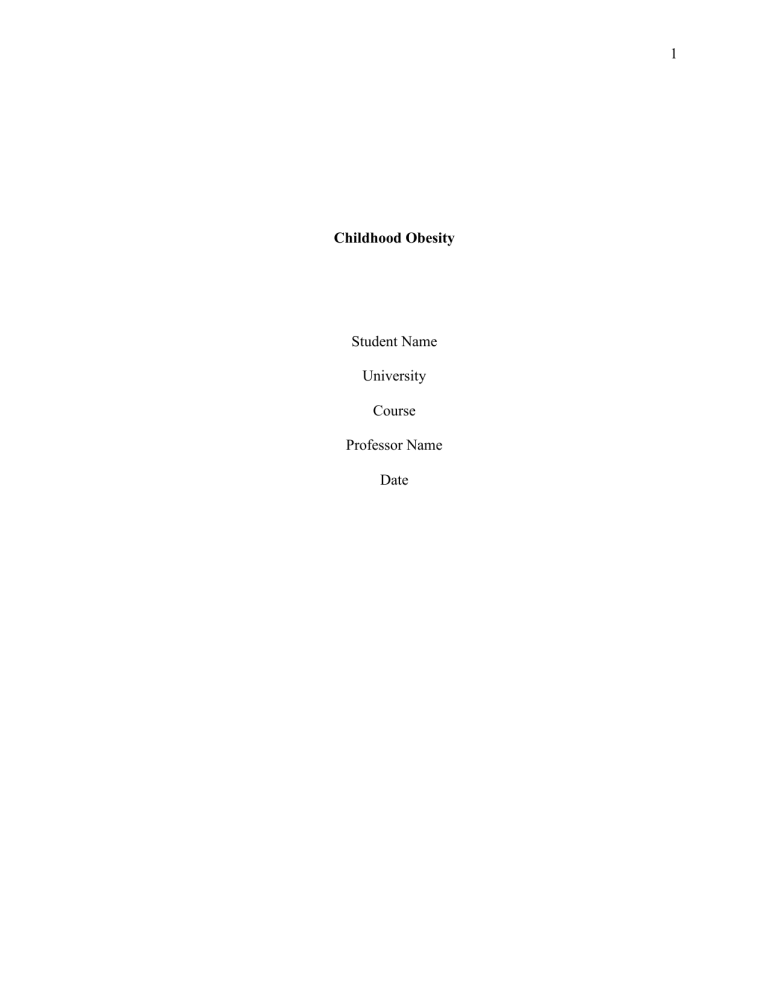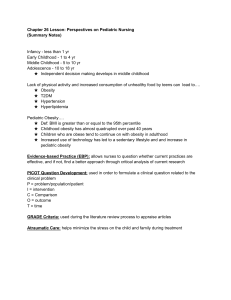
1 Childhood Obesity Student Name University Course Professor Name Date 2 Childhood Obesity Due to its great incidence and serious effects on adult health, childhood obesity is seen as a major problem. This comes from childhood to adulthood (Rolland-Cachera, 2011). In many nations, prevalence studies are conducted. It can be very helpful to analyze historical trends and make geographical comparisons because they can point to factors that contribute to obesity. As a result, the literature may contain unclear information. These studies call for proper definitions of nutritional status and defined methodologies, but in reality, the references, cut-offs, and language employed vary widely (Rolland-Cachera, 2011). Therefore, childhood obesity is considered a threat to the type of adult a child will become. Childhood obesity follows people into adulthood, and among obese children, the persistence of obesity increases with age. It has been proposed that early-onset obesity is a risk factor for morbidity and mortality in old age. Those who were overweight as teens had higher rates of diabetes, coronary heart disease, atherosclerosis, hip fracture, and gout in both sexes (Maffeis & Tatò, 2020). Considering the effects of obesity, this act can be described as inhuman and taboo. 3 References ben, munyao. (2023). Ethanol Effect - an overview | ScienceDirect Topics. Www.sciencedirect.com. https://www.sciencedirect.com/topics/pharmacology-toxicology-and-pharmaceuticalscience/ethanol-effect#:~:text=Ethanol%20causes%20CNS%20depression%20leading Maffeis, C., & Tatò, L. (2020). long-term effects of childhood obesity on morbidity and mortality. Karger.com. https://www.karger.com/Article/Abstract/63462


